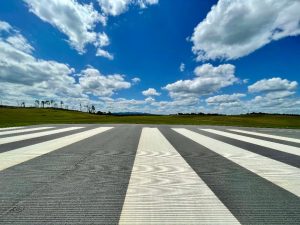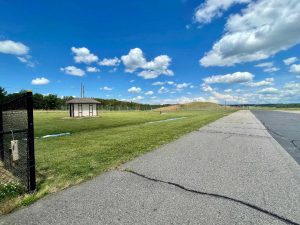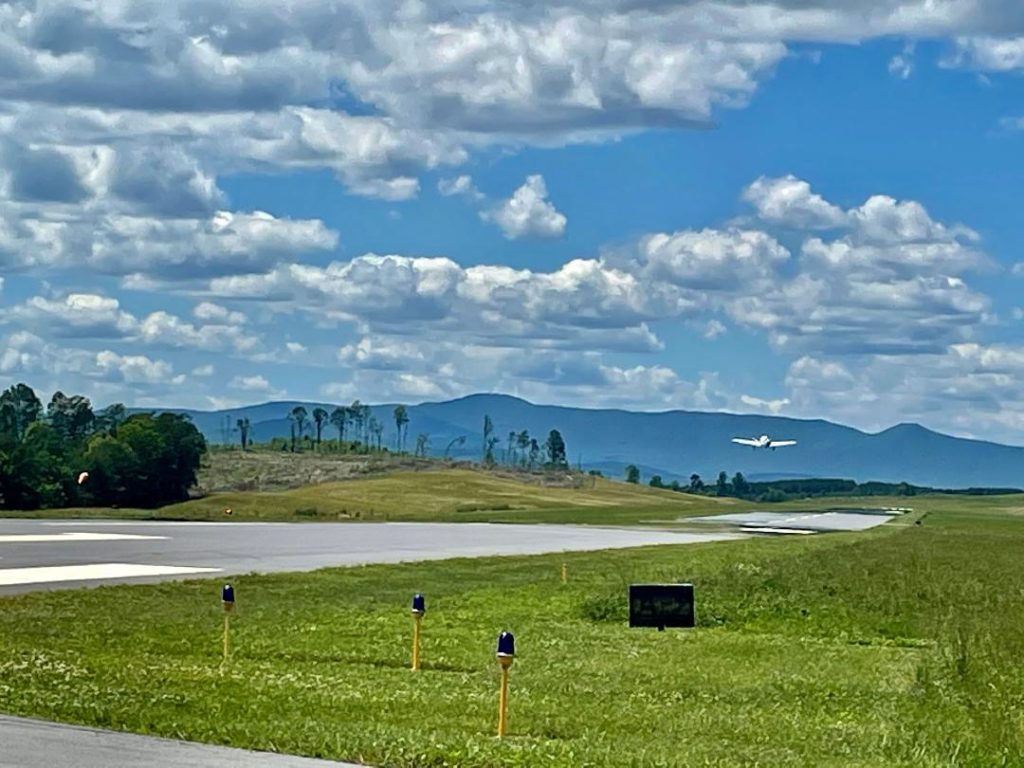
By Staff Reports
The Blue Ridge Regional Airport could hold the key to future economic development initiatives taking off in the area.
For this to happen, the airport must first complete some much-needed improvements, said Jason Davis, managing director of the airport.
“We are the window to the community. We are what they see first,” Davis said. “A company that has a business jet has to have an airport that is adequate to meet the needs of that airplane. If we are not adequate to meet the needs, then we are being deficient. Our responsibility is to not be the weak link in the economic development efforts of the area.”

Currently, the airport is undergoing a multi-phase project that will culminate in a new ramp and extended runway which will allow for more aircraft to occupy that space.
“The way that I explain it to people is we are currently a Dollar General parking lot for a Walmart,” Davis said. “We just don’t have enough parking. With NASCAR, Primland and the restaurant, it just doesn’t work.”
Davis said the project is currently in the preliminary stage that requires the extension of the ramp.
“We are moving the E Section of Airport Road and we are expanding our ramp about 300,000-square feet,” he said, adding this portion of the project is about 50 percent complete.
When the new road has asphalt, Airport Road will be shut down and construction will begin for an expanded aircraft parking area.
The Harvest Foundation previously donated funds to conduct an environmental assessment – which Davis said has already been completed.
“It’s approved, so now we are just in the queue for funding for the runway extension phase,” Davis said. “We are anticipating a 2023 start date on moving the west road and then a 2024 construction start time for the runway extension itself.”
While some may not see the value in extending the runway by 1,000 feet, Davis said the small extension will make a difference in terms of attracting new businesses.
“A lot of people will say ‘well it’s only 1,000 feet.’ Well, that is the difference between 60 percent of the time and 94 percent of the time meeting the needs of the business community,” he said. “We’ve seen airplanes divert to Greensboro when the runway is wet or hot. Once again, it’s an issue that has to be rectified.”
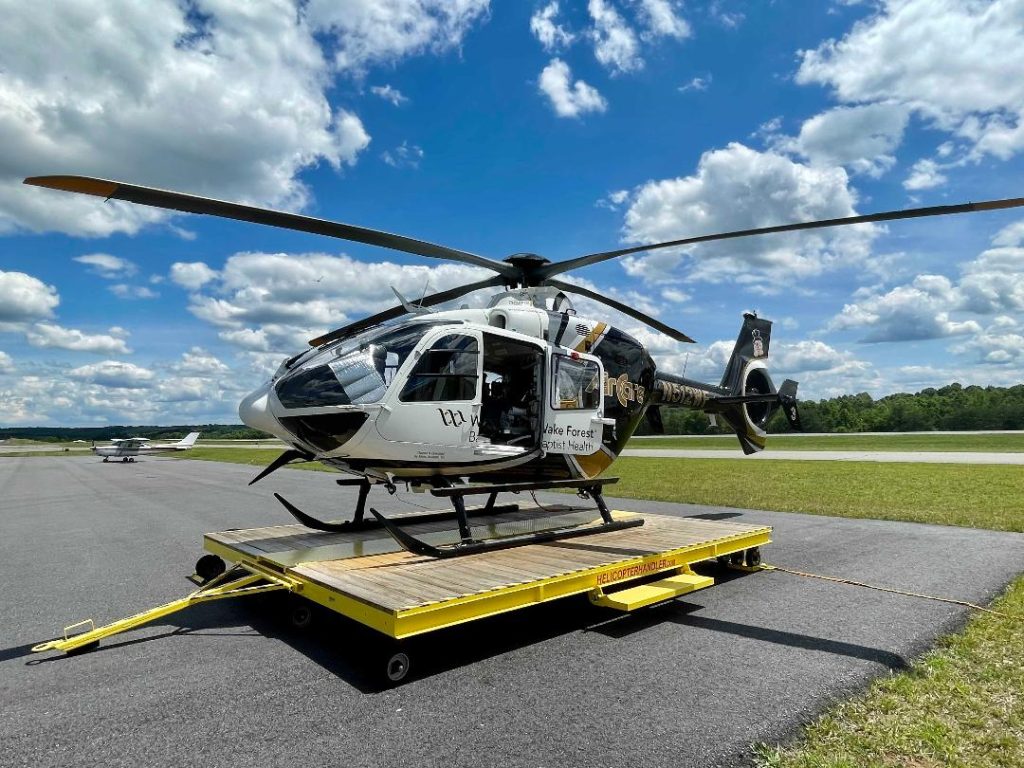
Not having the available space for a company’s jet on even one occasion could leave an impression, Davis said.
“Because when we say ‘no’ then we get them used to another area,” he continued. “They will say ‘you know what, we are looking at this town and they have this x-foot long runway and Martinsville doesn’t.’ We don’t want to be the reason that we lose a potential client at Commonwealth Crossing or any other industrial park.”
Davis said that approximately 33 airplanes come through the airport every day. Given the volume and lack of available space, the need for a runway extension is no longer just an issue of attracting potential clients.
“We have turned away people,” he said. “Not as often as we used to anymore; however, what happens is it’s a capacity issue. We do have a west apron that is fairly sizable, but it is not located at the terminal. So, what happens is when we get 20 small airplanes and mix it with four business jets, it doesn’t work. It’s a flow issue that ultimately translates into a safety issue.”
Unlike national and international airports, the regional model doesn’t function the same way.
“A regional airport is not a ticket-based system,” Davis said. “We don’t have any scheduled airline service. So, who do we see? We see the recreational guy in his little Cessna, we see the business traveler and we see the vacation traveler.”
For example, Davis said travelers come to visit the industrial parks, Primland and Martinsville Speedway.
“We see at least one business jet a day, and generally more,” he said. “And we have vacation travelers as well. People say that ‘people come to Martinsville for vacation?’ Well yeah, actually they do. Primland is probably our biggest client at this point.”
While the airport doesn’t allow for commercial flights, Davis said it can accommodate charter flights, if requested.
“Now, we do see the charter end of it, so if a customer wants a charter, then we can put those two together, the charter company and the client,” he said. “It’s not the cheapest way to travel; however, it is the most efficient mode of transportation.”
Davis said this could allow a company to fly into Martinsville to conduct business then head to Florida for similar matters on the same day.
“You can’t do that in the commercial aviation world. It’s a two-day trip at best. But in the corporate jet world, it’s a one-day trip,” Davis said. “We are a facet in that diamond of conducting business that way. People would be shocked at who we see and what we see as far as the corporate business traveler.”
On top of business travel, Davis said the airport fulfills other community needs as well. Examples of these include humanitarian efforts, such as transporting organs for transplants and assisting law enforcement with drug oversight.
With so much going on at the airport, Davis said providing adequate space to house aircraft also is becoming a problem.
Currently there are 49 “t-hangars” at the airport which house small airplanes, and there are 13 corporate hangars.
“They are all full,” Davis said. “We have a waiting list of about 15.”
Following the runway extension, Davis said he has plans to solve this issue as well.
“After we complete the extension itself, we are going to focus on the terminal building,” he said. “Like I said, we are moving the road and the apron is going to be bigger. We want to build a new terminal on the northeast side of the ramp.”
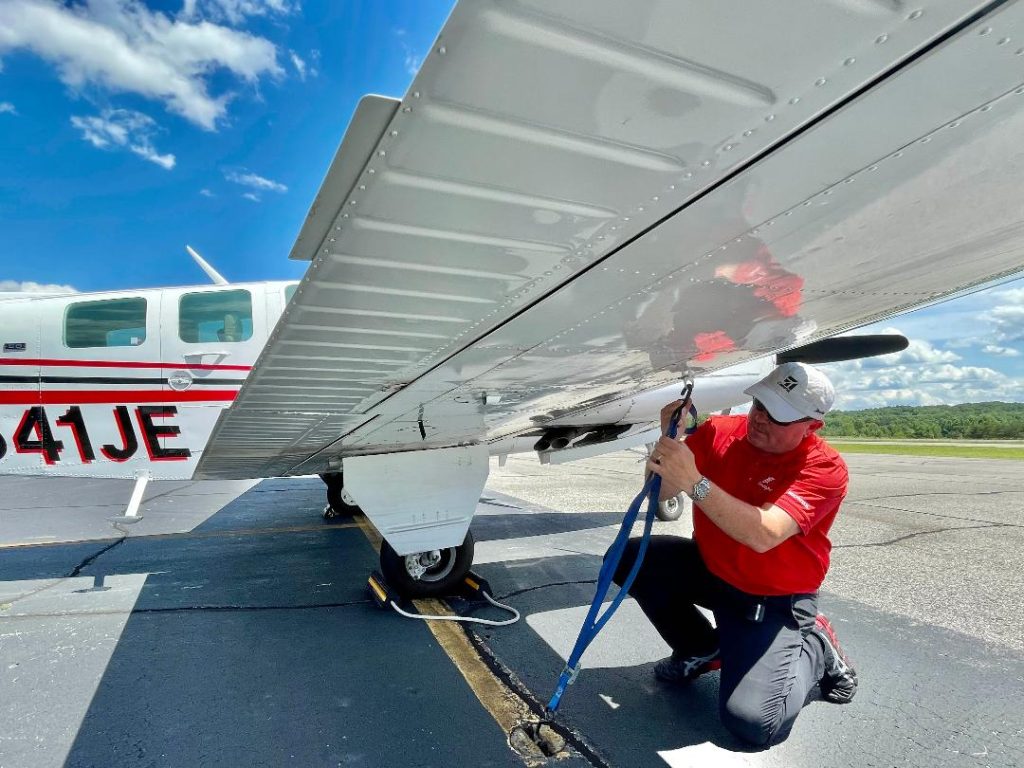
Once this is complete, Davis would like to expand the taxiway, which runs the length of the runway.
“Then we want to start developing around the new terminal building with corporate hangars on that northeast side,” he said.
Davis said he expects the runway expansion to be complete in 2025. Depending on available funding, he would like to see the new terminal and taxiway projects completed around 2028, which would leave a target of 2030 for the new hangars.
The airport is largely self-sufficient for its operations.
“How we function on a daily basis is money that we generate ourselves,” Davis said. “Primarily with the sale of fuel. Jet fuel is our biggest source of income. Hangar rent is our second biggest source of income, and then the sale of aviation gas is our third source.”
Anything beyond daily operations is a separate matter, Davis added.
“The airports do live and die by the grant, and we receive funding on capital projects from the state and (Federal Aviation Administration),” he said. “Without that, we would just not be able to have those kinds of projects. Every airport in the state, all 66 of us live and die by that grant.”




